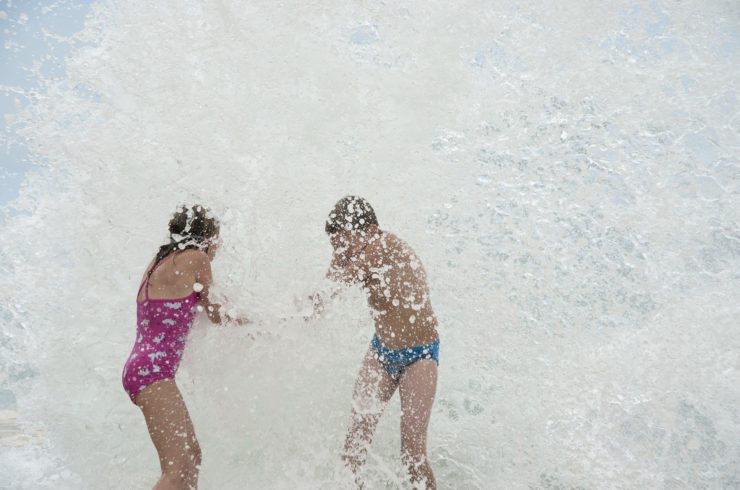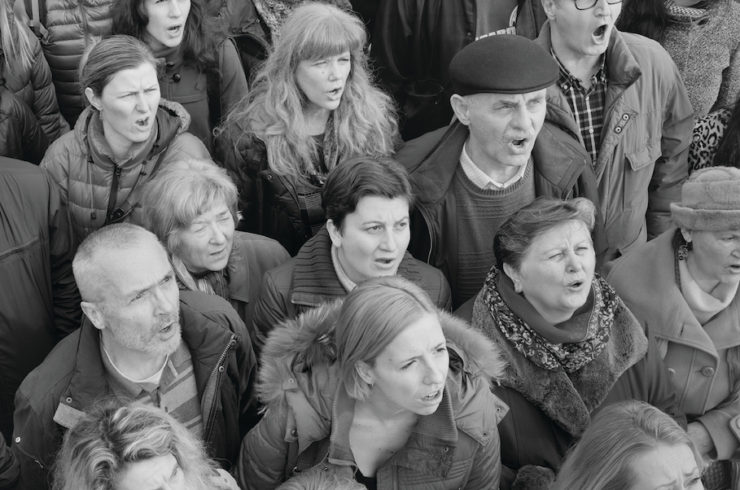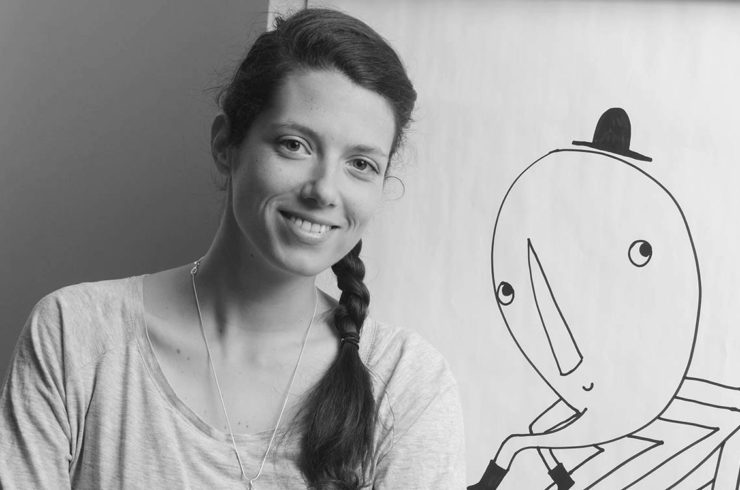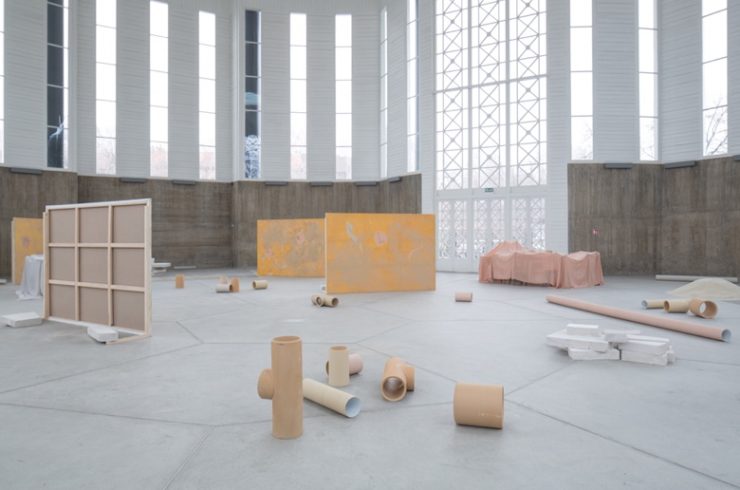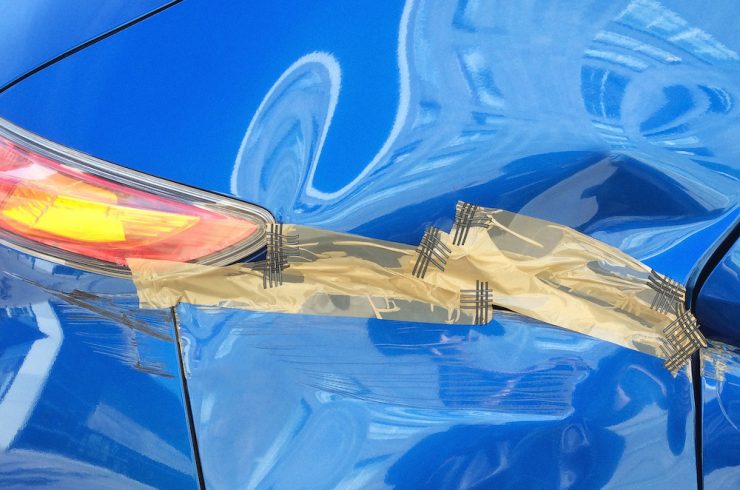Art
Through destruction and creation, Wukodrakula rises…
The way multimedia artist Bruno Poga?nik Wukodrakula describes his work is complex, layered, and circular, like his artistic practice itself. Everything feeds off of and builds on everything else, one idea is always related to another, and it all has multiple layers of meaning. Fundamentally, though, there are two central values that drive his work: the importance of feeling rooted in a place and of creating accessible, collaborative work.
Currently completing a MFA at Columbia University in New York City, Wukodrakula first gained widespread recognition on the street art scene in Zagreb under the pseudonym Filjio and later as Puma 34.
“I always wanted to have direct communication, even without knowing who I am communicating with. But I also need to feel rooted in the place where I live. I need to mark my territory. This is the most primitive notion ever,” says Wukodrakula of his early interest in street art. Equally important to him was its collaborative nature: street art, he says, gave him a “tribe,” a group of people that were like family. After a while, however, the group and his interest in making street art naturally dissipated, and he felt that he needed more space to develop on his narrative.
“I was always interested in telling stories, and what I lacked in Croatia was a common unifier that would connect all of these stories. Coming to NY forced me to develop a personal mythology, a system that would help me combine all of these parallel fragments of narrative into a larger structure,” he explains.
In 2011, Wukodrakula exhibited a site-specific installation, The Magic is Gone (But the Filth is Still There), at Lauba in Zagreb. For the artist, the site-specific installation signified his departure from the street art scene as well as a point of entry into the “larger story” that he is currently building at Columbia. He points out that each major transition or reinvention of self is accompanied by a name change. He used the name Puma34 while on the street art scene in Croatia, “revealed” himself as Bruno Poga?nik at the Lauba exhibition, and then took on a new name, Wukodrakula, after his move to New York City.
The story behind his new name is steeped in legend and mystery – it unites two powerful, mythical figures who are generally pitted against each other: Werewolf and Dracula. The name also has ancestral significance, as Wukodrakula has traced his heritage to Mattius Corvinus, the King of Hungary and Croatia from 1458 and allegedly the only man to ever imprison Vlad ?epe? the Impaler – the namesake of legendary Dracula.
With this transition, however, came certain challenges. Not only was Wukodrakula faced with making a new home in an entirely different country, he also felt the loss of his tribe, his network of likeminded people.
Enter the “Power Cave,” an ongoing, ever-changing, living sculpture, along with a heightened interest in online culture and its collaborative, social, and even spiritual or religious undertones. “I’m hugely influenced by internet culture and the way that information circulates [online]. Our need to seek approval of our existence through social networks and the distortion of reality through mediated experience has never been more evident. Going back to shamans, who were the link between their tribe and the other side, the spiritual side – I see myself as a cyber shaman. Reaching out to the other side through the screen of my MacBook Pro, I am communicating with this larger entity, this intelligent network, discovering altered states of consciousness and channeling these energies into the physical world.”
The Power Cave itself, a vibrantly painted, sculptural wonderland composed of found objects, video work by the artist, and contributions from visitors, is a highly complex structure that Wukodrakula likens it to a coral reef, where “there is creation and destruction, death and life happening at the same time.”
Essentially, the Power Cave represents what the virtual world – specifically Wukodrakula’s personal virtual world – might look like if it was manifested in real, physical space. “I am trying to build myself a safe zone,” he explains. “I have blogs, I have Tumblrs; they’re all virtual power caves, where I upload stuff that I can see later on and provide myself with some space where I can feel rooted in this world. With this Power Cave I actually have a physical space.”
Currently most, if not all, of Wukodrakula’s work eventually becomes part of the Power Cave. As he puts it, everything that he creates, no matter how small, must become part of something larger. A drawing, for instance, might be manipulated in Photoshop, animated, and turned into a video. Then he might corrupt the code to create “half abstract videos” that are played on screen in the Power Cave, use a video mixer to combine these videos with live feed of the Cave’s visitors, and finally print screen shots of the resulting images.
A significant aspect of the Power Cave is its collaborative nature. “I’m not interested in seeing the Power Cave as a commodified object,” he says. “For me, it’s interesting to see how far can I remove myself from the installation. You make an object, but it’s not really alive until people come into that object and customize it, start living and communicating with it. And then a dialogue starts. I’m interested in seeing how the Cave transforms once people bring their own stories to it.”
To achieve this, Wukodrakula opens up the Power Cave to friends and other artists who use it as a platform for performances, discussions, and screenings, bringing their own art into the space.
Wukodrakula’s collaborative approach comes from his adversity to art as fine art proper. And yet, he is well versed in the history of art, engaged with the contemporary art world (he names Gregor Schneider, Paul McCarthy, Pawel Althamer, and Justin Lowe and Jonah Freeman as recent sources of inspiration), and he is currently completing a Master’s degree in an esteemed art program. How does he reconcile all of this?
“I was always struggling with what I am doing,” he admits. “I don’t see it as art … but I am doing something, so what do I call that? I told myself that what I’m doing is ‘filjio,’ which was my first street art name. It has no meaning … but it’s the idea of freedom. That allows me to do what I’m doing within the discourse of contemporary art, but without admitting that I’m producing art. You can regard the side effects of that as art, but I’m not functioning within that system. When I enter my studio, I’m in filjio. And everything I do there is completely free…. Later on, it can be shown as fine art. I have no problems with that. But I put myself outside of this thing, otherwise I would feel trapped.”
Having established his own discourse within which he can freely create, Wukodrakula sees his work continuing to evolve organically while dealing with similar themes. He is planning to create large-scale sculptures that are physical manifestations of virtual parallel realities like the online game Second Life, bringing the virtual and physical worlds into one space and blurring the boundaries between the two.
In many ways, relocating to New York City has allowed him to experiment and ultimately pursue more ambitious projects. Since the move, for instance, he has learned welding and metalwork, woodwork, plastic casting, programming, animatronics, and advanced video editing, all of which he now does himself. One of the most impressive skills he now has is probably welding. This has made his art so much better. He is now able to include a range of different materials in his artwork, allowing him to create beautiful pieces. When he uses welding to create artwork, it’s vital that he wears his health and safety gear to make sure he keeps himself safe from the dangerous fumes. Also, it’s important that he uses metal shop vacuumes to clear away all of the debris and dust that may be covering his workspace after welding. This will ensure his workspace is clean for the next time he decides to create art.
“One of the other things that changed drastically was the color palette,” he adds. “Before coming to NY, the palette was subdued: browns, black, and dark ochre, maybe white. Now it’s neon red, yellow, green. [It came from] New York, the City of Lights. When I’m depressed I just go to Times Square and [get] this instant recharge. If there’s no sunshine, at least there’s neon.”
View a sample Wukodrakula’s video work below
Cornelus Maxx (2011)
Written by Elaine Ritchel (@elaineritchel)
Image source: Artist’s site





